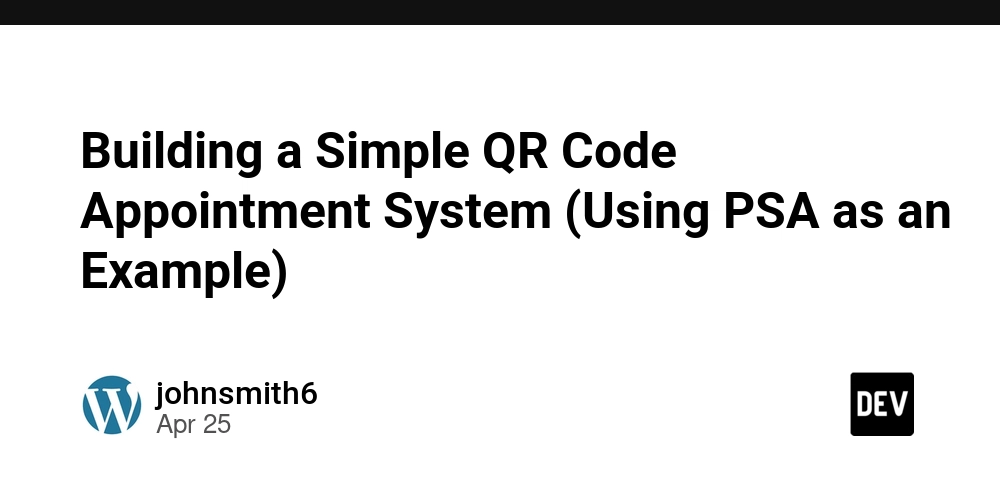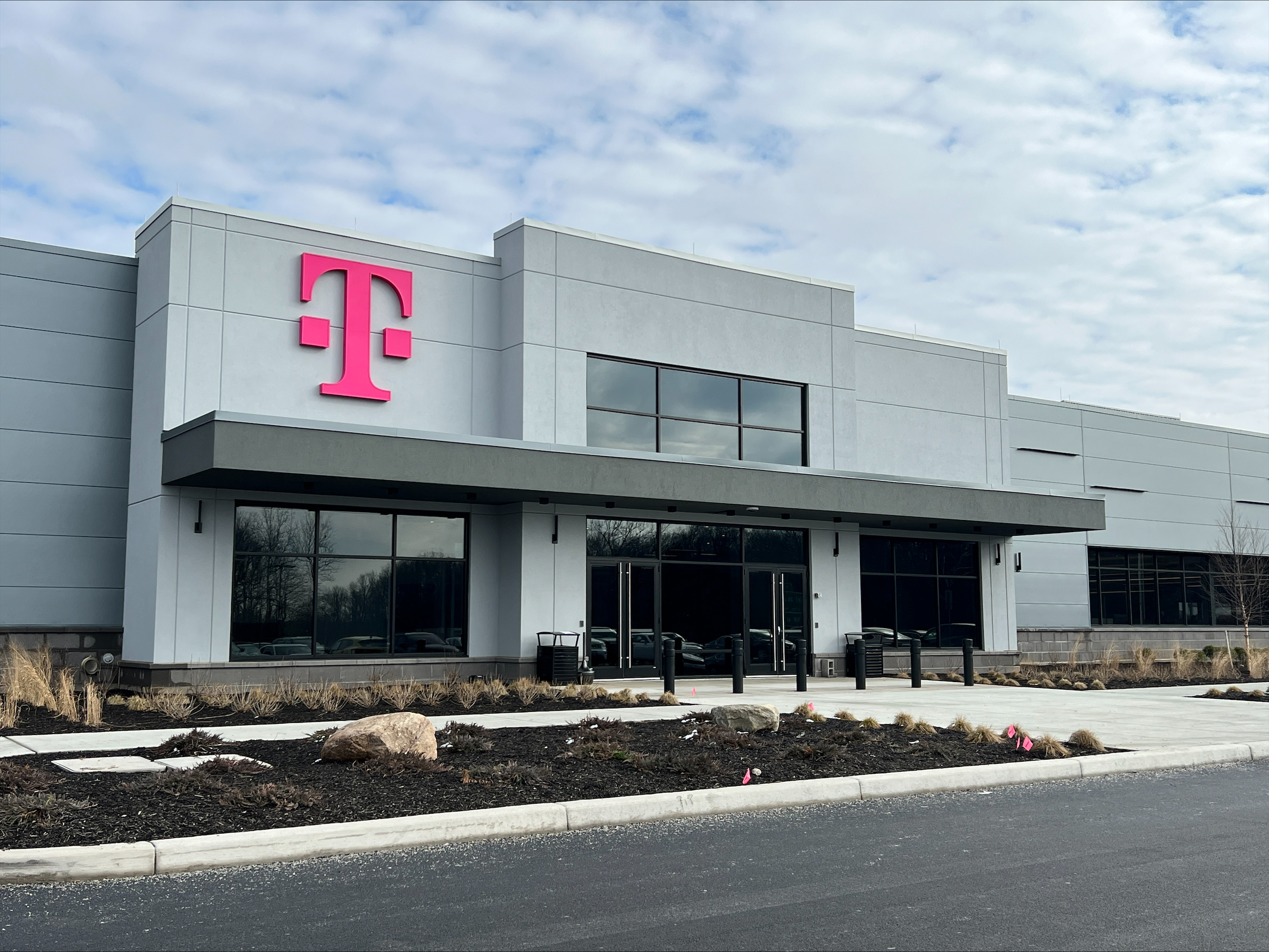AI Causal Analyst: LLM Agent Automates Causal Discovery & Inference
This is a Plain English Papers summary of a research paper called AI Causal Analyst: LLM Agent Automates Causal Discovery & Inference. If you like these kinds of analysis, you should join AImodels.fyi or follow us on Twitter. Bridging the Gap Between Causal Theory and Practice Causal analysis forms the backbone of scientific discovery and reliable decision-making across critical domains like healthcare, economics, and engineering. Despite its importance, a significant disconnect exists between sophisticated causal methodologies and their practical application. Domain experts struggle to leverage advanced causal tools while researchers lack the real-world testing grounds necessary to refine their approaches. Causal-Copilot addresses this gap by automating the entire causal analysis workflow through an LLM-powered autonomous agent. This innovative system makes expert-level causal analysis accessible to non-specialists while preserving methodological rigor. The disconnect creates a paradoxical situation: increasingly powerful causal tools are developed but rarely deployed at scale. Domain experts cannot access methodological advances they need, while causal researchers lack broad real-world testing grounds to refine their approaches, perpetuating the gap between theoretical sophistication and practical applicability. Advances in Causal Learning and LLM-powered Agents Over recent decades, the field has witnessed rapid development of methods for causal discovery, treatment effect estimation, and counterfactual inference. These advances span diverse theoretical frameworks designed to handle real-world challenges including latent confounding, selection bias, and nonstationarity. Existing causal tools often require deep statistical knowledge and programming expertise, creating significant barriers to adoption. While several software packages provide implementations of causal algorithms, they typically demand users understand the underlying assumptions and limitations of various approaches. Recent developments in LLM-based autonomous agents show promise for specialized analytical tasks. These agents can understand natural language instructions, reason about complex problems, and execute sophisticated workflows with minimal human guidance. However, before Causal-Copilot, no autonomous agent specifically designed for end-to-end causal analysis existed. The Data-Copilot project demonstrated how autonomous agents can bridge the gap between vast datasets and human analysts. Causal-Copilot extends this paradigm to the specialized domain of causal analysis, where the complexity of methods creates an even greater need for intelligent automation. The Architecture of Causal-Copilot: An End-to-End Autonomous Solution Causal-Copilot employs a modular architecture that automates the complete causal analysis pipeline. The system includes components for task understanding, algorithm selection, hyperparameter optimization, causal discovery, causal inference, result interpretation, and insight generation. At its core, Causal-Copilot leverages large language models to navigate the complexities of causal analysis. The system first understands user requirements through natural language, then translates these requirements into specific causal tasks. It analyzes input data characteristics to select appropriate algorithms from its extensive portfolio, configures hyperparameters based on data properties, executes the selected methods, and finally interprets results in plain language. The natural language interface allows domain experts to interact with sophisticated causal tools without needing to understand the underlying mathematical formulations or programming interfaces. Users can request specific analyses, refine parameters, and receive explanations of results through conversational interaction. By integrating over 20 state-of-the-art causal analysis techniques, Causal-Copilot provides comprehensive coverage across different causal paradigms. The system supports both tabular and time-series data, handles various data distributions, and accommodates different structural assumptions. The extensible framework allows for continuous incorporation of new methods as the field evolves. This adaptability ensures the system remains at the cutting edge of causal methodology while providing a stable interface for users. Similar to how causality enhances autonomous driving systems, Causal-Copilot brings autonomy to causal analysis itself. Under the Hood: Implementing an Intelligent Causal Analysis System Causal-Copilot implements a comprehensive algorithm portfolio spanning major causal paradigms. For causal discovery, the system integrates constraint-based methods (PC, FCI), score-based approaches (GES, FGES), linear non-Gaussian models (LiNGAM), continuous optimization techniques (NOTEARS, GOLEM), and specialized algorithms for time-series data (PCMCI, DYNOTEARS). For causal inference, Ca

This is a Plain English Papers summary of a research paper called AI Causal Analyst: LLM Agent Automates Causal Discovery & Inference. If you like these kinds of analysis, you should join AImodels.fyi or follow us on Twitter.
Bridging the Gap Between Causal Theory and Practice
Causal analysis forms the backbone of scientific discovery and reliable decision-making across critical domains like healthcare, economics, and engineering. Despite its importance, a significant disconnect exists between sophisticated causal methodologies and their practical application. Domain experts struggle to leverage advanced causal tools while researchers lack the real-world testing grounds necessary to refine their approaches.
Causal-Copilot addresses this gap by automating the entire causal analysis workflow through an LLM-powered autonomous agent. This innovative system makes expert-level causal analysis accessible to non-specialists while preserving methodological rigor.
The disconnect creates a paradoxical situation: increasingly powerful causal tools are developed but rarely deployed at scale. Domain experts cannot access methodological advances they need, while causal researchers lack broad real-world testing grounds to refine their approaches, perpetuating the gap between theoretical sophistication and practical applicability.
Advances in Causal Learning and LLM-powered Agents
Over recent decades, the field has witnessed rapid development of methods for causal discovery, treatment effect estimation, and counterfactual inference. These advances span diverse theoretical frameworks designed to handle real-world challenges including latent confounding, selection bias, and nonstationarity.
Existing causal tools often require deep statistical knowledge and programming expertise, creating significant barriers to adoption. While several software packages provide implementations of causal algorithms, they typically demand users understand the underlying assumptions and limitations of various approaches.
Recent developments in LLM-based autonomous agents show promise for specialized analytical tasks. These agents can understand natural language instructions, reason about complex problems, and execute sophisticated workflows with minimal human guidance. However, before Causal-Copilot, no autonomous agent specifically designed for end-to-end causal analysis existed.
The Data-Copilot project demonstrated how autonomous agents can bridge the gap between vast datasets and human analysts. Causal-Copilot extends this paradigm to the specialized domain of causal analysis, where the complexity of methods creates an even greater need for intelligent automation.
The Architecture of Causal-Copilot: An End-to-End Autonomous Solution
Causal-Copilot employs a modular architecture that automates the complete causal analysis pipeline. The system includes components for task understanding, algorithm selection, hyperparameter optimization, causal discovery, causal inference, result interpretation, and insight generation.
At its core, Causal-Copilot leverages large language models to navigate the complexities of causal analysis. The system first understands user requirements through natural language, then translates these requirements into specific causal tasks. It analyzes input data characteristics to select appropriate algorithms from its extensive portfolio, configures hyperparameters based on data properties, executes the selected methods, and finally interprets results in plain language.
The natural language interface allows domain experts to interact with sophisticated causal tools without needing to understand the underlying mathematical formulations or programming interfaces. Users can request specific analyses, refine parameters, and receive explanations of results through conversational interaction.
By integrating over 20 state-of-the-art causal analysis techniques, Causal-Copilot provides comprehensive coverage across different causal paradigms. The system supports both tabular and time-series data, handles various data distributions, and accommodates different structural assumptions.
The extensible framework allows for continuous incorporation of new methods as the field evolves. This adaptability ensures the system remains at the cutting edge of causal methodology while providing a stable interface for users. Similar to how causality enhances autonomous driving systems, Causal-Copilot brings autonomy to causal analysis itself.
Under the Hood: Implementing an Intelligent Causal Analysis System
Causal-Copilot implements a comprehensive algorithm portfolio spanning major causal paradigms. For causal discovery, the system integrates constraint-based methods (PC, FCI), score-based approaches (GES, FGES), linear non-Gaussian models (LiNGAM), continuous optimization techniques (NOTEARS, GOLEM), and specialized algorithms for time-series data (PCMCI, DYNOTEARS).
For causal inference, Causal-Copilot supports double machine learning, doubly robust estimation, instrumental variable methods, matching techniques, and counterfactual estimation. This diversity enables the system to handle various estimation tasks across different data types and assumptions.
The intelligent algorithm selector analyzes input data characteristics—including size, dimensionality, distributional properties, and domain constraints—to recommend optimal methods for each specific task. This removes the burden from users to navigate the complex landscape of causal algorithms.
Automated hyperparameter optimization further enhances performance by tuning algorithm configurations based on data properties. The system leverages both heuristic rules and adaptive search strategies to identify optimal parameter settings without user intervention.
To enable efficient analysis at scale, Causal-Copilot incorporates various acceleration techniques, including GPU-accelerated implementations of computationally intensive algorithms. This allows the system to handle large-scale datasets that would be prohibitive for standard implementations.
| Algorithm | Data Type | Family | Acceleration | |
|---|---|---|---|---|
| PC | Tabular (Flexible) | Constraint-based | CPU, GPU | |
| FCI | Tabular (Flexible) | Constraint-based | CPU | |
| CD-NOD | Tabular (Flexible) | Constraint-based | CPU, GPU | |
| GES | Tabular (Flexible) | Score-based | - | |
| FGES | Tabular (Linear) | Score-based | - | |
| XGES | Tabular (Linear) | Score-based | - | |
| GRaSP | Tabular (Flexible) | Score-based | - | |
| ICA-LiNGAM | Tabular (Linear) | LiNGAM | - | |
| DirectLiNGAM | Tabular (Linear) | LiNGAM | GPU | |
| NOTEARS (Linear) | Tabular (Linear) | Continuous-opt | GPU | |
| Causal Discovery | NOTEARS (Nonlinear) | Tabular (Nonlinear) | Continuous-opt | GPU |
| GOLEM | Tabular (Linear) | Continuous-opt | GPU | |
| CALM | Tabular (Linear) | Continuous-opt | GPU | |
| CORL | Tabular (Linear) | Continuous-opt | GPU | |
| InterIAMB | Tabular (Flexible) | MB-based | CPU | |
| IAMBnPC | Tabular (Flexible) | MB-based | CPU | |
| HITON-MB | Tabular (Flexible) | MB-based | CPU | |
| MBOR | Tabular (Flexible) | MB-based | CPU | |
| BAMB | Tabular (Flexible) | MB-based | CPU | |
| Hybrid | Tabular (Flexible) | Hybrid | CPU | |
| PCMCI | Time Series (Flexible) | Constraint-based | CPU | |
| VAR-LiNGAM | Time Series (Linear) | LiNGAM | GPU | |
| DYNOTEARS | Time Series (Linear) | Continuous-opt | GPU | |
| NTS-NOTEARS | Time Series (Nonlinear) | Continuous-opt | GPU | |
| Causal Inference | LinearDML | Tabular (Linear) | Double ML | - |
| SparseLinearDML | Tabular (Linear) | Double ML | - | |
| CausalForestDML | Tabular (Nonlinear) | Double ML | - | |
| LinearDRL | Tabular (Linear) | Doubly Robust | - | |
| SparseLinearDRL | Tabular (Linear) | Doubly Robust | - | |
| ForestDRL | Tabular (Nonlinear) | Doubly Robust | - | |
| DRIV Family | Tabular (Flexible) | Instrumental Var | - | |
| PSM | Tabular (Flexible) | Matching | - | |
| CEM | Tabular (Flexible) | Matching | - | |
| Counterfactual Estimation | Tabular (Flexible) | Counterfactual | - | |
| Auxiliary Analysis | Feature Importance | Mixed (Flexible) | Model Explanation | - |
| Abnormal Detection | Mixed (Flexible) | Root Cause Analysis | - |
Table 1: Comprehensive overview of the causal discovery and inference algorithms integrated in Causal-Copilot, showing the diversity of approaches, data types supported, and acceleration methods.
Putting Causal-Copilot to the Test: Performance Analysis
To evaluate Causal-Copilot's performance, the researchers conducted comprehensive benchmarking across diverse scenarios, including basic settings, data quality challenges, and compound real-world scenarios. Performance was measured using F1 scores to capture both precision and recall of causal relationships.
For tabular data causal discovery, Causal-Copilot consistently outperformed baseline methods across almost all test scenarios. The system showed particular strength in handling large-scale datasets where competing methods either failed entirely or showed significant performance degradation.
In normal settings with 15 variables and 3,000 samples, Causal-Copilot achieved an impressive F1 score of 0.990, substantially outperforming GPT-4o (0.030), PC (0.920), FCI (0.010), GES (0.030), and DirectLiNGAM (0.220). Even more notably, Causal-Copilot maintained strong performance in extreme large-scale scenarios with 100 variables where other methods failed to complete due to computational constraints.
| Category | Subcategory | Setting | Causal-Copilot | GPT-4o | PC | FCI | GES | DirectLiNGAM |
|---|---|---|---|---|---|---|---|---|
| Basic Scenarios | Default Settings | Normal (p=15, n=3000) | $0.990+0.180$ | $0.030+0.160$ | $0.920+0.050$ | $0.010+0.060$ | $0.030+0.090$ | $0.220+0.220$ |
| Dmax (p=0.5) | $0.760+0.170$ | $0.450+0.120$ | $0.410+0.110$ | $0.430+0.110$ | $0.430+0.110$ | $0.430+0.120$ | ||
| Sparse (p=0.1) | $0.630+0.260$ | $0.630+0.260$ | $0.810+0.270$ | $0.840+0.240$ | $0.780+0.270$ | $0.140+0.270$ | ||
| Scale Count | Extreme Large (p=100) | $0.805+0.130$ | N/A | N/A | N/A | N/A | N/A | |
| Super Large (p=100) | $0.910+0.080$ | N/A | $0.660+0.170$ | $0.740+0.120$ | N/A | $0.240+0.110$ | ||
| Large (p=50) | $0.950+0.080$ | $0.790+0.190$ | $0.790+0.140$ | $0.790+0.120$ | $0.560+0.460$ | $0.230+0.110$ | ||
| Sample Size | Extra Large (p=10000) | $0.970+0.050$ | $0.760+0.230$ | $0.810+0.180$ | $0.630+0.180$ | $0.670+0.220$ | $0.210+0.180$ | |
| Large (p=3000) | $0.950+0.070$ | $0.770+0.270$ | $0.880+0.150$ | $0.630+0.120$ | $0.880+0.240$ | $0.220+0.160$ | ||
| Large Scale | Extreme Large Scale and Sample (p=1000, n=10000) | $0.870+0.140$ | N/A | N/A | N/A | N/A | N/A | |
| Scan Type | Non-Causing | $0.980+0.040$ | $0.830+0.190$ | $0.840+0.170$ | $0.850+0.200$ | $0.860+0.270$ | $0.570+0.470$ | |
| Mixed Data Types | Discrete (value=0.2) | $0.980+0.140$ | N/A | $0.820+0.190$ | $0.630+0.110$ | $0.920+0.080$ | $0.360+0.840$ | |
| Data Quality Challenges | Data Quality | Measurement Domains | $0.780+0.100$ | $0.600+0.090$ | $0.510+0.210$ | $0.620+0.190$ | $0.460+0.320$ | $0.230+0.090$ |
| Measurement Error | $0.890+0.190$ | $0.740+0.400$ | $0.680+0.310$ | $0.860+0.190$ | $0.760+0.250$ | $0.260+0.130$ | ||
| Missing Data | $0.770+0.170$ | $0.890+0.210$ | $0.640+0.160$ | $0.720+0.180$ | $0.720+0.140$ | $0.410+0.180$ | ||
| Compound Scenarios | Standard Real-world Scenarios | Chased Data Scenarios | $0.690+0.090$ | $0.640+0.040$ | $0.520+0.070$ | $0.610+0.040$ | $0.480+0.120$ | $0.220+0.180$ |
| Financial Data Scenarios | $0.850+0.130$ | N/A | $0.260+0.030$ | $0.390+0.030$ | N/A | $0.160+0.030$ | ||
| Social Network Scenarios | $0.450+0.090$ | N/A | N/A | N/A | N/A | N/A |
Table 2: Comprehensive F1 Score Comparison Across All Scenarios (Mean ± Std). ‡ indicates settings include both linear case and non-linear case, while † indicates settings with purely linear relationships. N/A denotes algorithms that failed to complete due to computational constraints.
For time-series data, Causal-Copilot demonstrated competitive performance against specialized algorithms. The system achieved an F1 score of 0.673 in normal settings with 20 variables and 5 time lags, comparable to PCMCI (0.695) and slightly below DYNOTEARS (0.733). Notably, Causal-Copilot maintained reasonable performance in very large settings (100 variables) where most competing methods failed.
| Category | Subcategory | Setting | Causal-Copilot | GPT-4o | PCMCI | DYNOTEARS | VARLiNGAM | NTSNOTEARS |
|---|---|---|---|---|---|---|---|---|
| Basic Scenarios | Default Settings | Normal ( $\mathrm{p}=20, \mathrm{l}=5$ ) | $0.673 \pm 0.018$ | $0.655 \pm 0.033$ | $0.695 \pm 0.017$ | $0.733 \pm 0.007$ | $0.498 \pm 0.052$ | $0.173 \pm 0.018$ |
| Node Count | Very Large ( $\mathrm{p}=100, \mathrm{l}=3$ ) | $0.182 \pm 0.004$ | N/A | N/A | N/A | $0.121 \pm 0.007$ | N/A | |
| Large ( $\mathrm{p}=50, \mathrm{l}=3$ ) | $0.264 \pm 0.012$ | $0.223 \pm 0.006$ | $0.286 \pm 0.015$ | N/A | $0.177 \pm 0.021$ | N/A | ||
| Small ( $\mathrm{p}=3, \mathrm{l}=3$ ) | $0.978 \pm 0.003$ | $0.917 \pm 0.023$ | $0.916 \pm 0.017$ | $0.974 \pm 0.001$ | $0.965 \pm 0.013$ | $0.807 \pm 0.041$ | ||
| Time Lag | Large ( $\mathrm{l}=20$ ) | $0.850 \pm 0.031$ | $0.738 \pm 0.018$ | $0.838 \pm 0.027$ | $0.767 \pm 0.010$ | $0.773 \pm 0.149$ | $0.239 \pm 0.054$ | |
| Small ( $\mathrm{l}=3$ ) | $0.869 \pm 0.056$ | $0.638 \pm 0.011$ | $0.704 \pm 0.023$ | $0.713 \pm 0.012$ | $0.763 \pm 0.014$ | $0.461 \pm 0.023$ | ||
| Sample Size | Extra Large ( $\mathrm{n}=5000$ ) | $0.668 \pm 0.003$ | $0.715 \pm 0.017$ | $0.728 \pm 0.017$ | $0.722 \pm 0.017$ | $0.759 \pm 0.027$ | $0.167 \pm 0.016$ | |
| Large ( $\mathrm{n}=2000$ ) | $0.623 \pm 0.041$ | $0.682 \pm 0.020$ | $0.703 \pm 0.010$ | $0.732 \pm 0.008$ | $0.795 \pm 0.055$ | $0.178 \pm 0.016$ | ||
| Noise | Non-Gaussian | $0.828 \pm 0.163$ | $0.679 \pm 0.241$ | $0.657 \pm 0.204$ | $0.327 \pm 0.201$ | $0.714 \pm 0.251$ | $0.243 \pm 0.141$ | |
| Gaussian | $0.888 \pm 0.060$ | $0.651 \pm 0.221$ | $0.655 \pm 0.177$ | $0.563 \pm 0.308$ | $0.690 \pm 0.206$ | $0.419 \pm 0.281$ |
Table 3: Comprehensive F1 Score Comparison across all scenarios for time series algorithms (Mean ± Std). The data has linear causal relations and is stationary. N/A denotes algorithms that failed to complete execution due to computational constraints.
The system's robustness was particularly evident in challenging scenarios with measurement errors, missing data, and complex real-world relationships. In financial data scenarios, Causal-Copilot achieved an F1 score of 0.850, substantially outperforming PC (0.260), FCI (0.390), and DirectLiNGAM (0.160).
These results demonstrate that Causal-Copilot's intelligent algorithm selection and hyperparameter optimization deliver superior performance across diverse scenarios, especially in complex, large-scale settings where traditional methods struggle.
Real-World Applications: From Theory to Practice
Causal-Copilot enables practical applications of causal analysis across diverse domains. In healthcare, the system can uncover underlying causal mechanisms in disease progression, identify treatment effects accounting for confounding factors, and support personalized medicine by revealing heterogeneous treatment effects.
In financial analysis, Causal-Copilot helps identify causal relationships between market variables, economic indicators, and asset prices. The system's ability to handle time-series data makes it particularly valuable for understanding dynamic relationships in financial markets and supporting investment decisions.
For public policy evaluation, the system enables rigorous assessment of policy impacts by properly accounting for confounding variables and selection biases. This supports evidence-based policymaking through more reliable causal inference than traditional correlational approaches.
The interactive refinement process allows domain experts to guide the analysis through natural language. Users can ask follow-up questions, request alternative analyses, focus on specific relationships, or incorporate domain knowledge. This iterative workflow bridges the gap between statistical rigor and domain expertise.
Similar to how language agents enhance autonomous driving, Causal-Copilot demonstrates how LLM-powered agents can transform specialized analytical workflows. The system's natural language interface and automated pipeline make sophisticated causal analysis accessible to researchers and practitioners without requiring deep statistical expertise.
Limitations and Future Directions
Despite its advances, Causal-Copilot has several limitations. The system's performance depends on the quality and representativeness of input data. In scenarios with extreme noise, significant missing data, or complex unmeasured confounding, even the best algorithms may yield unreliable results.
The algorithm selection mechanism, while sophisticated, still relies on heuristic rules derived from theoretical properties and empirical observations. Future versions could benefit from meta-learning approaches that continuously improve selection criteria based on accumulated performance data.
Hyperparameter optimization remains challenging, particularly for algorithms with complex parameter spaces. More advanced optimization strategies, including Bayesian optimization or neural architecture search techniques, could further enhance performance.
Integration of domain-specific knowledge represents another frontier for improvement. While Causal-Copilot can incorporate user guidance through natural language, more structured approaches for encoding domain constraints and prior knowledge could enhance analysis quality.
The researchers behind Causal-Copilot are exploring extensions to handle more complex data types, including graph-structured data, images, and text. These advances would broaden the system's applicability across additional domains and use cases.
Conclusion: Democratizing Causal Analysis
Causal-Copilot represents a significant step toward democratizing access to sophisticated causal methods. By automating the complete causal analysis workflow through an LLM-powered agent, the system bridges the gap between theoretical sophistication and practical applicability.
The system creates a virtuous cycle that benefits both domain experts and causal researchers. Domain experts gain access to state-of-the-art causal methods without needing specialized statistical training, while causal researchers benefit from broader real-world deployment that generates valuable feedback for method refinement.
Causal-Copilot's superior performance across diverse scenarios, including challenging real-world conditions, demonstrates the power of intelligent automation in causal analysis. The system's ability to handle large-scale datasets, select appropriate algorithms, optimize hyperparameters, and interpret results makes advanced causal analysis accessible to a wider audience.
As causal reasoning becomes increasingly important for trustworthy AI and decision support systems, tools like Causal-Copilot play a crucial role in expanding the practical impact of causal methodology. By lowering the barrier to entry while maintaining methodological rigor, Causal-Copilot advances the goal of making causal thinking a standard component of data analysis across disciplines.









































































































































































![[The AI Show Episode 144]: ChatGPT’s New Memory, Shopify CEO’s Leaked “AI First” Memo, Google Cloud Next Releases, o3 and o4-mini Coming Soon & Llama 4’s Rocky Launch](https://www.marketingaiinstitute.com/hubfs/ep%20144%20cover.png)

































































































































![[DEALS] Sterling Stock Picker: Lifetime Subscription (85% off) & Other Deals Up To 98% Off – Offers End Soon!](https://www.javacodegeeks.com/wp-content/uploads/2012/12/jcg-logo.jpg)












































































































.jpg?#)




















































































































































![Apple to Shift Robotics Unit From AI Division to Hardware Engineering [Report]](https://www.iclarified.com/images/news/97128/97128/97128-640.jpg)

![Apple Shares New Ad for iPhone 16: 'Trust Issues' [Video]](https://www.iclarified.com/images/news/97125/97125/97125-640.jpg)



































































































































